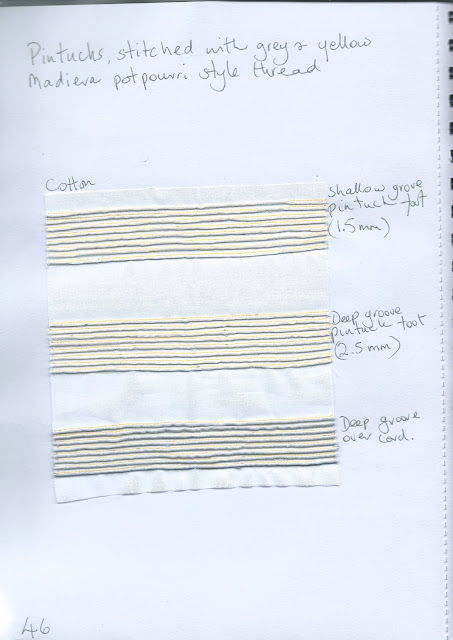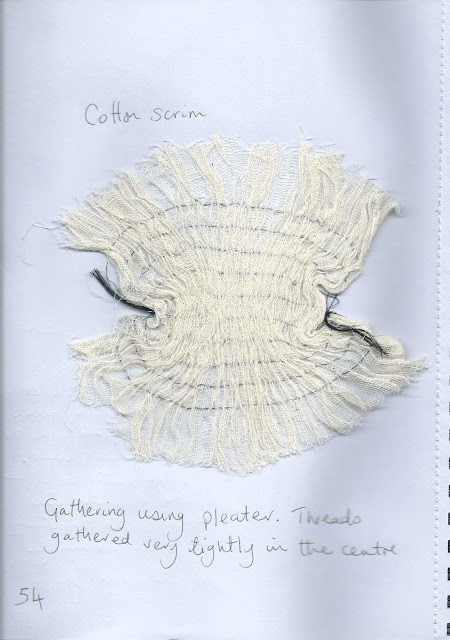SKETCH BOOK
I chose stitches that I was not very familiar with and tried a little experimentation
 |
| Page 67 |
 |
| Page 68 |
 |
| Close up of Thorn Stitch |
 |
| Close up of Wave Stitch |
 |
| Close up of Wheatear Stitch |
 |
| Close up of Guilloche Stitch |
 |
| Close up of Chevron Stitch |
 |
| Close up of Laced Herringbone Stitch |
 |
| Close up of Cretan Stitch |
 |
Page 69
|
Formal and informal examples of blanket/buttonhole stitch, using 6 down to 1 strand of embroidery thread. Stitched on polyester satin.
 |
| Page 70 |
Formal and informal variation of closed blanket/buttonhole stitch. Stitched with embroidery thread and wool.
 |
| Page 71 |
Formal and informal crossed blanket/buttonhole stitch. Stitched in embroidery thread and raffia.
 |
| Page 72 |
Formal and informal variation of blanket/buttonhole stitch, stitched in embroidery thread and white floss.
 |
| Page 73 |
Formal and informal variation of detached blanket/buttonhole stitch. Stitched with embroidery thread, narrow cord and raffia.
 |
| Page 74 |
Formal and informal variation of up and down blanket/buttonhole stitch. Stitched in embroidery thread and cord.
 |
| Page 75 |
Formal and informal variations of knotted buttonhole stitch. Stitched with embroidery threads and raffia.
 |
| Page 76 |
Formal and informal variation of Antwerp stitch. Stitched with embroidery threads and cord. The large shapes in the informal version were stitched with two threaded needles.
 |
| Page 77 |
This rubbing was taken from page 23, the yucca tree. It is the best of all the rubbings. The pattern has been repeated twice. Oil pastel on black tissue paper. I found this gave the best results.
 |
| Page 78 |
Not such a good rubbing of the chusan palm, taken from page 22. Oil pastel on black tissue paper.
 |
| Page 79 |
Rubbing taken from fabric manipulation on page 65. I could not get a good rubbing from the paper relief on page 22. Oil pastel on black tissue paper.
 |
| Page 80 |
Rubbing taken from fabric manipulation of page 62, repeated at different angles. Oil pastel on black tissue paper.
 |
| Page 81 |
Rubbing taken from paper relief on page 21. Oil pastel on black tissue paper.
 |
| Page 82 |
A disappointed rubbing taken from page 20 of the olive tree. I thought this would come out much better as the surface was very textured, but I think the surface was too soft. Oil pastel on tissue paper.














































